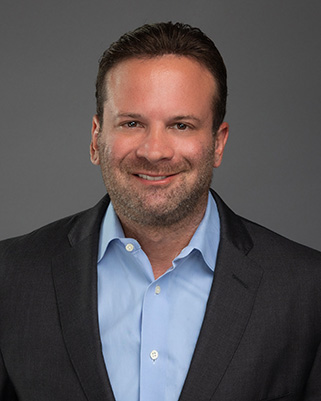Originally published 7/7/2016
As the original blog below points out, the use of Active Surveillance (AS) has increased in the last decade. Men who are initially diagnosed with low to very low risk prostate cancer (PCa), or Grade Group (GG) 1, are almost always given the option to go on AS. The main considerations for doctors and patients are described in the blog below. However, focal therapy presents an alternative option for GG 1 patients, or GG 2 patients whose MRI and biopsy provide a high degree of confidence that a patient has a single focus of disease (tumor or lesion) amenable to minimal-to-noninvasive destruction using ablation. Canadian researcher and authority Dr. Laurence Klotz offers a balanced presentation on the pros and cons of AS vs. focal therapy. In it, he remarks, “As an advocate of focal therapy, I’m frankly staggered by the persistent resistance to the concept of focal therapy in the urological community. I really don’t understand it. The arguments seem so compelling.”
If you’ve been diagnosed with early stage, low risk PCa and are considering AS, we invite you to come in for a consultation to learn how we determine if you are a candidate for focal therapy. Among its many appealing benefits, it has the potential to permanently destroy the PCa while sparing healthy tissue and prostate function, without closing off future options should need arise. Our Center now offers the three FDA-cleared ablation methods: Focal Laser Ablation, TULSA-PRO, and MRI-guided Focused Ultrasound. This treatment “menu” allows Dr. Sperling to recommend which of the three is the best match in terms of an individual’s disease and lifestyle. Please contact us with any questions.
The number of prostate cancer patients who opt for active surveillance (AS) is rising. The most important reason men go on AS is to avoid the risks that accompany whole-gland treatments. In fact, it’s so important to patients that according to a Dutch study, 30% who were not considered candidates for AS chose it anyway against doctor recommendations.[i] However, there is an undercurrent of ambivalence among urologists. If you are on AS, or considering it, you are probably familiar with the obvious worries:
- There is no such a thing as “indolent” prostate cancer. What makes any cancer dangerous is that sooner or later it will grow, with the potential to spread and eventually kill its host.
- There is no reliable way besides biopsy to monitor for microscopic disease changes.
- There is no inexpensive and simple blood or urine test yet that is 100% specific for prostate cancer, let alone disease progression.
- Patients say they want to go on AS, but then they don’t comply on schedule with all the monitoring they need to do.
Urologists are trained as surgeons, and until fairly recently, they were taught that prostate cancer is a multifocal disease. Did you ever think about how hard it must be to change beliefs after years of medical education and training? Richard Lam, MD, is the Research Director with Prostate Oncology Specialists in Marina del Rey, CA. He says that urologists “have not been taught to not take out prostate cancer. It’s almost in their DNA to take it out.”[ii]
In defense of urologists, that’s changing. Since the 2012 recommendation by the U.S. Panel against widespread prostate cancer screening, urologists have been the biggest drivers in educating patients about the merits of AS. Even so, I want to draw attention to something most patients don’t think about There are three areas in which urologists may feel they are at risk in putting a patient on AS.
First, rising medical costs and managed health care plans are forcing urology practices (for that matter, almost all specialty practices) into new income generation models. This is not greed; this is the reality of today’s medical economics. In addition to being good clinicians, doctors also have to be good business managers – not something they were taught in medical school. AS is labor intensive in terms of each patient’s monitoring protocol, but it does not generate much cash flow. Even if a urologist is confident that AS is a good clinical choice for an individual, there’s a subtle pressure to do more in-office procedures rather than spend consultation time discussing lifestyle changes or pursuing patients who missed a scheduled monitoring test, imaging, or biopsy.
Second, if a treatment window is missed for reasons ranging from lack of patient compliance to a false negative repeat biopsy—plus everything in between—and the result is a cancer that can no longer be cured, the threat of a malpractice suit is enough to inspire fear in any doctor.
Third, and most important, gauging the risk level of each case of prostate cancer is not a perfect science. It’s complicated to come up with a prediction of how each man’s cancer will behave, and at best it comes down to probabilities. For example, in the Dutch study I mentioned earlier, they calculated whether a man was a candidate for AS based on certain percentage combinations of the following factors:
- PSA <20 ng/mL
- Clinical stage T1 or T2a-c disease
- Prostate volume
- < 50% positive biopsy cores
- < 20 mm cancer tissue
- > mm benign tissue
- Gleason < 3 + 3
Other authorities use their own variations of these weighted factors, so there’s no universal agreement on criteria. There is no iron-clad guarantee that going on AS is perfectly safe. I have never met a single urologist who takes a light attitude about helping a patient make that decision, because no one wants any lingering doubt about whether he did the right thing for his patient. This is not about what was taught in medical school, or about medical/legal issues, this is about conscience. I’m sure I speak for my colleagues in saying we all became physicians because we want to heal, not hurt, those who put their lives in our hands.
I empathize with my urologic colleagues, and I believe that in offering 3T multiparametric MRI as an essential part of working up a patient for AS and monitoring his safety, I am doing my part to help overcome any ambivalence or guesswork about whether it’s the right choice for that individual. I’m also tremendously encouraged over the promising biomarker/genomic analytic tests now becoming available and affordable, which can further diminish guesswork and amplify certainty.
The choice to go on active surveillance requires big picture thinking on all of our parts. The more we understand all the factors that go into the decision, the wiser the decision will ultimately be.
NOTE: This content is solely for purposes of information and does not substitute for diagnostic or medical advice. Talk to your doctor if you are experiencing pelvic pain, or have any other health concerns or questions of a personal medical nature.
References
[i] Van Vugt HA, Roobol MJ, van der Poel HG, van Muilekom EH et al. Selecting men diagnosed with prostate cancer for active surveillance using a risk calculator: a prospective impact study. BJU Int. 2012 Jul;110(2):180-7.
[ii] http://www.medscape.com/viewarticle/748782


